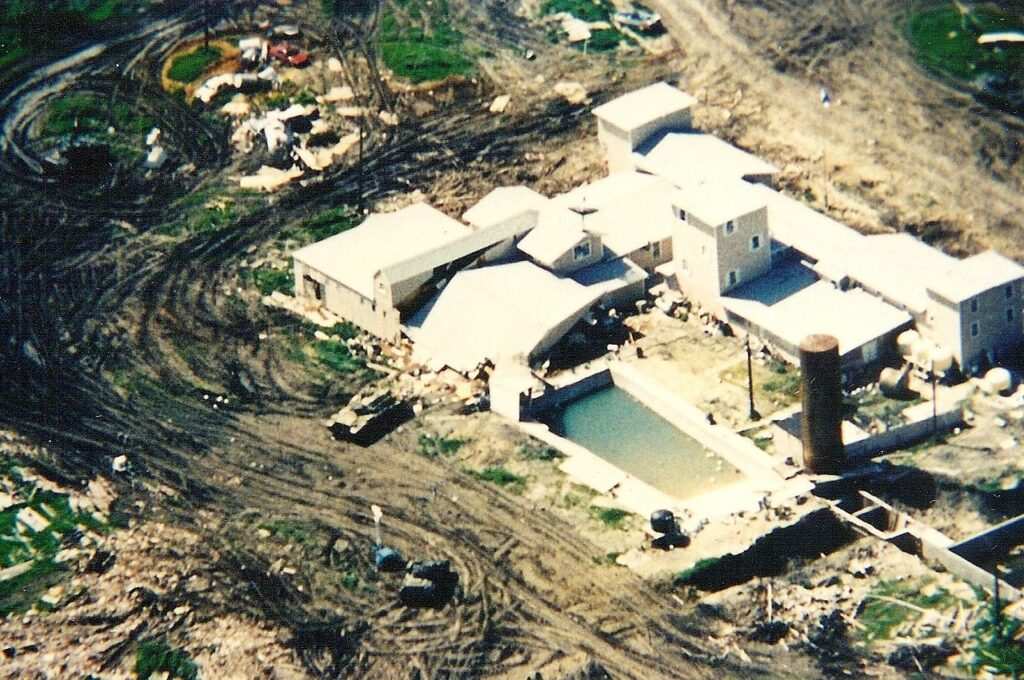On February 28, 1993, Bureau of Alcohol Tobacco and Firearms (ATF) agents initiated a raid at a compound in Waco, Texas that resulted in a deadly shoot-out and an ensuing 51-day standoff.
The ATF raid targeted the compound of a religious sect of Seventh Day Adventists, known as the Branch Davidians and led by David Koresh. The initial raid was an attempt to serve search and arrest warrants for Koresh and other members of the religious sect on weapons charges, but the bungled raid saw ATF agents pull back due to casualties sustained in the initial assault.
According to a Treasury Department review of the ATF raid, reported by the Waco Tribune in 1994, a KWTX-TV photographer had a chance run-in with a mailman who was also a member of the Branch Davidians on the morning of the raid. It is believed that by this chance encounter, the sect became aware of the incoming ATF raid and armed themselves in preparation.
Around 70 ATF agents arrived to raid the compound, and while it’s still unclear which side fired first, a gun battle broke out that resulted in the deaths of four ATF agents and injuries to at least a dozen more. Six Branch Davidians were also killed in the initial gunfight and Koresh was also injured. Three National Guard helicopters also provided overflights during the initial raid and sustained damage due to pilot error, according to a 1999 Government Accountability Office report.

After the botched raid, ATF agents pulled back and instead surrounded the compound. According to History.com nearly 900 federal agents would take part in the ensuing standoff, led by the FBI.
The FBI attempted to negotiate Koresh and the other Branch Davidians’ surrender, and Koresh initially agreed to surrender if the FBI agreed to broadcast one of his sermons on national television. The FBI agreed to the broadcast, but Koresh did not uphold his end of the deal.
From that point, federal agents tried several tactics to get the Branch Davidians to come out of the compound, including turning off the compound’s electricity and playing music over loudspeakers and shining spotlights on the complex to “disrupt sleep.”
Tanks on loan from the military were also used to crush vehicles parked outside the compound.

The siege lasted into April before then-U.S. Attorney General Janet Reno, convinced that the Davidians wouldn’t come out, authorized the FBI to raid the compound. Reno justified the raid based on claims of ongoing child abuse from within the compound. Reno approved a plan to use tear gas to force the group to leave the compound.
On the morning of April 19, 1993, tanks outfitted with hoses to breach the compound and pump the equivalent of 400 canisters of tear gas into the building. The gassing attempt lasted for more than five hours before fires broke out around the compound. Nine Davidians were able to escape, but another 76 people died after being trapped inside the burning compound. Koresh was found to have sustained a gunshot wound to the head and it is unclear if he killed himself or was killed by someone else.

The tear gas used on the compound was flammable, leading to some speculation the gas caught fire and caused the compound to burn down. Reno appointed lawyer and former Republican Sen. John Danforth to investigate the incident, and in 2000, his report concluded that the U.S. government “did not cause the fire.”
The Waco siege resulted in backlash on the ATF and the FBI. According to a Justice Department report shared by the Houston Chronicle in 1993, Reno’s claims of child abuse were “inaccurate” and ‘there was no direct evidence indicating that Koresh engaged in any physical or sexual abuse of children during the standoff.”



